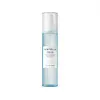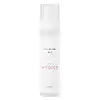What's inside
What's inside
 Key Ingredients
Key Ingredients

 Benefits
Benefits

 Concerns
Concerns

No concerns
 Ingredients Side-by-side
Ingredients Side-by-side

Camellia Sinensis Leaf Water
MaskingWater
Skin Conditioning1,2-Hexanediol
Skin ConditioningIsopentyldiol
HumectantCentella Asiatica Extract 0.3%
CleansingCordyceps Militaris Extract
Skin ConditioningHibiscus Esculentus Fruit Extract
Skin ConditioningButylene Glycol
HumectantMethylpropanediol
SolventBetaine
HumectantXylitol
HumectantSodium Hyaluronate
HumectantHydrolyzed Hyaluronic Acid
HumectantHyaluronic Acid
HumectantPolyglyceryl-10 Oleate
Skin ConditioningPolyglyceryl-10 Myristate
Skin ConditioningPentylene Glycol
Skin ConditioningPolyglyceryl-6 Dioleate
EmulsifyingPyrus Communis Fruit Extract
Skin ConditioningAdenosine
Skin ConditioningRosa Damascena Flower Water
MaskingPolyglyceryl-4 Laurate
EmulsifyingEthylhexylglycerin
Skin ConditioningCucumis Melo Fruit Extract
Skin ConditioningCitric Acid
BufferingIris Florentina Root Extract
MaskingSodium Phytate
Hedera Helix Leaf/Stem Extract
AntimicrobialPolyglutamic Acid
Skin ConditioningGalactomyces Ferment Filtrate
HumectantArtemisia Princeps Leaf Extract
Skin ConditioningGlycerin
HumectantCaprylic/Capric Triglyceride
MaskingHydrogenated Lecithin
EmulsifyingCeramide NP
Skin ConditioningCamellia Sinensis Leaf Water, Water, 1,2-Hexanediol, Isopentyldiol, Centella Asiatica Extract 0.3%, Cordyceps Militaris Extract, Hibiscus Esculentus Fruit Extract, Butylene Glycol, Methylpropanediol, Betaine, Xylitol, Sodium Hyaluronate, Hydrolyzed Hyaluronic Acid, Hyaluronic Acid, Polyglyceryl-10 Oleate, Polyglyceryl-10 Myristate, Pentylene Glycol, Polyglyceryl-6 Dioleate, Pyrus Communis Fruit Extract, Adenosine, Rosa Damascena Flower Water, Polyglyceryl-4 Laurate, Ethylhexylglycerin, Cucumis Melo Fruit Extract, Citric Acid, Iris Florentina Root Extract, Sodium Phytate, Hedera Helix Leaf/Stem Extract, Polyglutamic Acid, Galactomyces Ferment Filtrate, Artemisia Princeps Leaf Extract, Glycerin, Caprylic/Capric Triglyceride, Hydrogenated Lecithin, Ceramide NP
Water
Skin ConditioningBetula Platyphylla Japonica Juice
Skin ConditioningDipropylene Glycol
HumectantMethylpropanediol
SolventNiacinamide
SmoothingPentylene Glycol
Skin ConditioningPropanediol
SolventGlycerin
HumectantPyrus Malus Fruit Water
MaskingCitrus Aurantium Bergamia Fruit Oil
MaskingPortulaca Oleracea Extract
Skin ConditioningXylitol
HumectantLactobacillus Ferment
Skin ConditioningLactococcus Ferment Lysate
Skin ConditioningBifida Ferment Lysate
Skin ConditioningCinnamomum Cassia Bark
Skin ConditioningGynostemma Pentaphyllum Leaf/Stem Extract
AntioxidantStreptococcus Thermophilus Ferment
HumectantBetaine
Humectant1,2-Hexanediol
Skin ConditioningPanthenol
Skin ConditioningButylene Glycol
HumectantPolyglyceryl-10 Laurate
Skin ConditioningPolyglyceryl-10 Myristate
Skin ConditioningAdenosine
Skin ConditioningGlyceryl Caprylate
EmollientTromethamine
BufferingHydrolyzed Hyaluronic Acid
HumectantButyl Avocadate
Skin ConditioningEthylhexyl Palmitate
EmollientHexylene Glycol
EmulsifyingXylitylglucoside
HumectantAnhydroxylitol
HumectantSodium Hyaluronate
HumectantPolyglutamic Acid
Skin ConditioningCapryloyl Glycine
CleansingCaprylic/Capric Triglyceride
MaskingPhospholipids
Skin ConditioningSilica Dimethyl Silylate
EmollientCeramide NP
Skin ConditioningSarcosine
Skin ConditioningCaprylyl Glycol
EmollientCholesterol
EmollientEthylhexylglycerin
Skin ConditioningArginine
MaskingPropyl Gallate
AntioxidantCarbomer
Emulsion StabilisingDisodium EDTA
Phenoxyethanol
PreservativePhytosterols
Skin ConditioningWater, Betula Platyphylla Japonica Juice, Dipropylene Glycol, Methylpropanediol, Niacinamide, Pentylene Glycol, Propanediol, Glycerin, Pyrus Malus Fruit Water, Citrus Aurantium Bergamia Fruit Oil, Portulaca Oleracea Extract, Xylitol, Lactobacillus Ferment, Lactococcus Ferment Lysate, Bifida Ferment Lysate, Cinnamomum Cassia Bark, Gynostemma Pentaphyllum Leaf/Stem Extract, Streptococcus Thermophilus Ferment, Betaine, 1,2-Hexanediol, Panthenol, Butylene Glycol, Polyglyceryl-10 Laurate, Polyglyceryl-10 Myristate, Adenosine, Glyceryl Caprylate, Tromethamine, Hydrolyzed Hyaluronic Acid, Butyl Avocadate, Ethylhexyl Palmitate, Hexylene Glycol, Xylitylglucoside, Anhydroxylitol, Sodium Hyaluronate, Polyglutamic Acid, Capryloyl Glycine, Caprylic/Capric Triglyceride, Phospholipids, Silica Dimethyl Silylate, Ceramide NP, Sarcosine, Caprylyl Glycol, Cholesterol, Ethylhexylglycerin, Arginine, Propyl Gallate, Carbomer, Disodium EDTA, Phenoxyethanol, Phytosterols
 Reviews
Reviews

Ingredients Explained
These ingredients are found in both products.
Ingredients higher up in an ingredient list are typically present in a larger amount.
1,2-Hexanediol is a synthetic liquid and another multi-functional powerhouse.
It is a:
- Humectant, drawing moisture into the skin
- Emollient, helping to soften skin
- Solvent, dispersing and stabilizing formulas
- Preservative booster, enhancing the antimicrobial activity of other preservatives
Adenosine is in every living organism. It is one of four components in nucleic acids that helps store our DNA.
Adenosine has many benefits when used. These benefits include hydrating the skin, smoothing skin, and reducing wrinkles. Once applied, adenosine increases collagen production. It also helps with improving firmness and tissue repair.
Studies have found adenosine may also help with wound healing.
In skincare products, Adenosine is usually derived from yeast.
Learn more about AdenosineBetaine is a common humectant (a substance that promotes retention of moisture). It's known to be gentle on the skin and can help balance hydration.
This ingredient is best for improving hydration and soothing irritated skin. Studies also show it helps even out skin tone.
Fun fact: Betaine is naturally created in the skin and body. The kind found within cosmetic products can be either plant-derived or synthetic.
Another name for betaine is trimethylglycine.
Learn more about BetaineButylene Glycol (or BG) is used within cosmetic products for a few different reasons:
Overall, Butylene Glycol is a safe and well-rounded ingredient that works well with other ingredients.
Though this ingredient works well with most skin types, some people with sensitive skin may experience a reaction such as allergic rashes, closed comedones, or itchiness.
Learn more about Butylene GlycolThis ingredient is an emollient, solvent, and texture enhancer. It is considered a skin-softener by helping the skin prevent moisture loss.
It helps thicken a product's formula and makes it easier to spread by dissolving clumping compounds.
Caprylic Triglyceride is made by combining glycerin with coconut oil, forming a clear liquid.
While there is an assumption Caprylic Triglyceride can clog pores due to it being derived from coconut oil, there is no research supporting this.
Learn more about Caprylic/Capric TriglycerideCeramide NP is a type of ceramide and formally known as ceramide 3.
Ceramides are intercellular lipids naturally found in our skin that bonds dead skin cells together to create a barrier. They are known for their ability to hold water and thus are a great ingredient for dry skin.
Ceramides are an important building block for our skin barrier. A stronger barrier helps the skin look more firm and hydrated. By bolstering the skin ceramides act as a barrier against irritating ingredients. This can help with inflammation as well.
If you would like to eat ceramides, sweet potatoes contain a small amount.
Read more about other common types of ceramides here:
Ceramide AP
Ceramide EOP
Ethylhexylglycerin (we can't pronounce this either) is commonly used as a preservative and skin softener. It is derived from glyceryl.
You might see Ethylhexylglycerin often paired with other preservatives such as phenoxyethanol. Ethylhexylglycerin has been found to increase the effectiveness of these other preservatives.
Glycerin is already naturally found in your skin. It helps moisturize and protect your skin.
A study from 2016 found glycerin to be more effective as a humectant than AHAs and hyaluronic acid.
As a humectant, it helps the skin stay hydrated by pulling moisture to your skin. The low molecular weight of glycerin allows it to pull moisture into the deeper layers of your skin.
Hydrated skin improves your skin barrier; Your skin barrier helps protect against irritants and bacteria.
Glycerin has also been found to have antimicrobial and antiviral properties. Due to these properties, glycerin is often used in wound and burn treatments.
In cosmetics, glycerin is usually derived from plants such as soybean or palm. However, it can also be sourced from animals, such as tallow or animal fat.
This ingredient is organic, colorless, odorless, and non-toxic.
Glycerin is the name for this ingredient in American English. British English uses Glycerol/Glycerine.
Learn more about GlycerinHydrolyzed Hyaluronic Acid is a form of hyaluronic acid. It is created by the hydrolysis of hyaluronic acid with a high molecular weight. Once created, Hydrolyzed Hyaluronic Acid has a low molecular weight.
Low molecular weight HA has been shown to hydrate and increase elasticity of the skin. Increasing elasticity is also associated with reduction of wrinkle depth.
One study found topical low molecular weight hyaluronic acid may be considered for the treatment of rosacea in the adult population. However, we always recommend speaking with a professional about your skin concerns.
Hyaluronic acids are a humectant. This means they draw moisture from the air. Hyaluronic acids help moisturize, soothe, and protect the skin.
Read more about other common forms of hyaluronic acid:
Learn more about Hydrolyzed Hyaluronic AcidMethylpropanediol is a synthetic solvent and humectant.
As a solvent, it helps dissolve other ingredients, helping to evenly distribute ingredients throughout the product. This ingredient has also been shown to have antimicrobial properties which makes it a preservative booster.
Methylpropanediol is able to add a bit of moisture to the skin. It also helps other ingredients be better absorbed into the skin, such as salicylic acid.
Learn more about MethylpropanediolPentylene glycol is typically used within a product to thicken it. It also adds a smooth, soft, and moisturizing feel to the product. It is naturally found in plants such as sugar beets.
The hydrophilic trait of Pentylene Glycol makes it a humectant. As a humectant, Pentylene Glycol helps draw moisture from the air to your skin. This can help keep your skin hydrated.
This property also makes Pentylene Glycol a great texture enhancer. It can also help thicken or stabilize a product.
Pentylene Glycol also acts as a mild preservative and helps to keep a product microbe-free.
Some people may experience mild eye and skin irritation from Pentylene Glycol. We always recommend speaking with a professional about using this ingredient in your routine.
Pentylene Glycol has a low molecular weight and is part of the 1,2-glycol family.
Learn more about Pentylene GlycolPolyglutamic Acid is made up many glutamic acids chained together. It is created from bacterial fermentation.
This ingredient is an effective skin hydrator and may help speed up wound healing. As a humectant, it draws and holds water to the skin. This ingredient is often compared to hyaluronic acid or glycerin. Similarly to hyaluronic acid, it can vary in molecular weights. This means polyglutamic acid is capable of bringing hydration to lower levels of the skin.
Fun fact: Polyglutamic Acid is found in the Japanese food, natto. It is also being used in cancer treatment studies.
Learn more about Polyglutamic AcidPolyglyceryl-10 Myristate isn't fungal acne safe.
Sodium Hyaluronate is hyaluronic acid's salt form. It is commonly derived from the sodium salt of hyaluronic acid.
Like hyaluronic acid, it is great at holding water and acts as a humectant. This makes it a great skin hydrating ingredient.
Sodium Hyaluronate is naturally occurring in our bodies and is mostly found in eye fluid and joints.
These are some other common types of Hyaluronic Acid:
Learn more about Sodium HyaluronateWater. It's the most common cosmetic ingredient of all. You'll usually see it at the top of ingredient lists, meaning that it makes up the largest part of the product.
So why is it so popular? Water most often acts as a solvent - this means that it helps dissolve other ingredients into the formulation.
You'll also recognize water as that liquid we all need to stay alive. If you see this, drink a glass of water. Stay hydrated!
Learn more about WaterXylitol is a humectant and prebiotic. It can help with dry skin.
In studies, xylitol has been shown to improve dry skin. It decreased transepidermal water loss, or when water passes through the skin and evaporates. Xylitol also showed to help improve the biomechanical properties of the skin barrier.
The prebiotic property of xylitol may also help reinforce our skin's natural microbiome. Having a healthy microbiome prevents infection by bad bacteria and helps with hydration.
As a humectant, Xylitol helps draw moisture from both the air and from deeper skin layers. This helps keep skin hydrated.
Xylitol is a sugar alcohol and commonly used as a sugar substitute. It is naturally occurring in plants such as strawberries and pumpkin.
Learn more about Xylitol